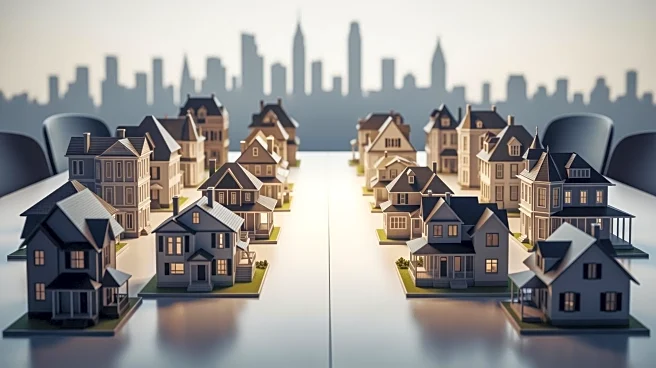What's Happening?
BDB Construction Enterprise has completed the conversion of a historic Holiday Inn into the world's tallest student residence at 99 Washington Street in New York's Financial District. The building, now
a 50-story, 485-foot tall dormitory, offers 650 beds and modern amenities for students and interns from nearby universities. The transformation includes new finishes, cabinetry, and fixtures, with shared spaces such as communal kitchens, dining areas, laundry rooms, lounges, study zones, and a fitness center. The project is led by Tallal Bhutta, Founder and CEO of BDB Construction, and is part of a national expansion effort, including a renovation of a student apartment building in Berkeley, California.
Why It's Important?
The conversion of the hotel into student housing addresses the growing demand for affordable and convenient residential options for students in major cities. As urban areas face challenges in providing adequate housing for students, projects like this offer a solution by repurposing existing structures. This development not only provides necessary accommodations but also contributes to the revitalization of the Financial District, potentially boosting local businesses and services catering to the student population. The project reflects a broader trend of adaptive reuse in real estate, which can lead to more sustainable urban development.
What's Next?
The completion of the second phase of the project is expected later in 2025, with additional amenities and shared spaces being finalized. As the student housing market continues to grow, BDB Construction may pursue further projects in other urban areas, expanding their footprint and addressing housing shortages. Stakeholders, including local universities and city planners, may collaborate to ensure the integration of such developments into the community, enhancing the overall student experience and supporting local economic growth.
Beyond the Headlines
The adaptive reuse of buildings like the Holiday Inn into student housing highlights the potential for sustainable urban development. By repurposing existing structures, developers can reduce the environmental impact associated with new construction. This approach also preserves historical architecture, maintaining the cultural heritage of urban areas. As cities continue to evolve, such projects may become increasingly common, offering innovative solutions to housing challenges while promoting environmental and cultural sustainability.













